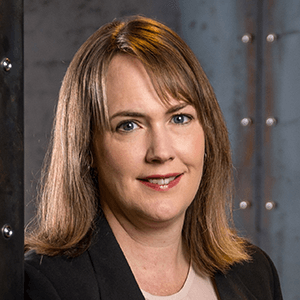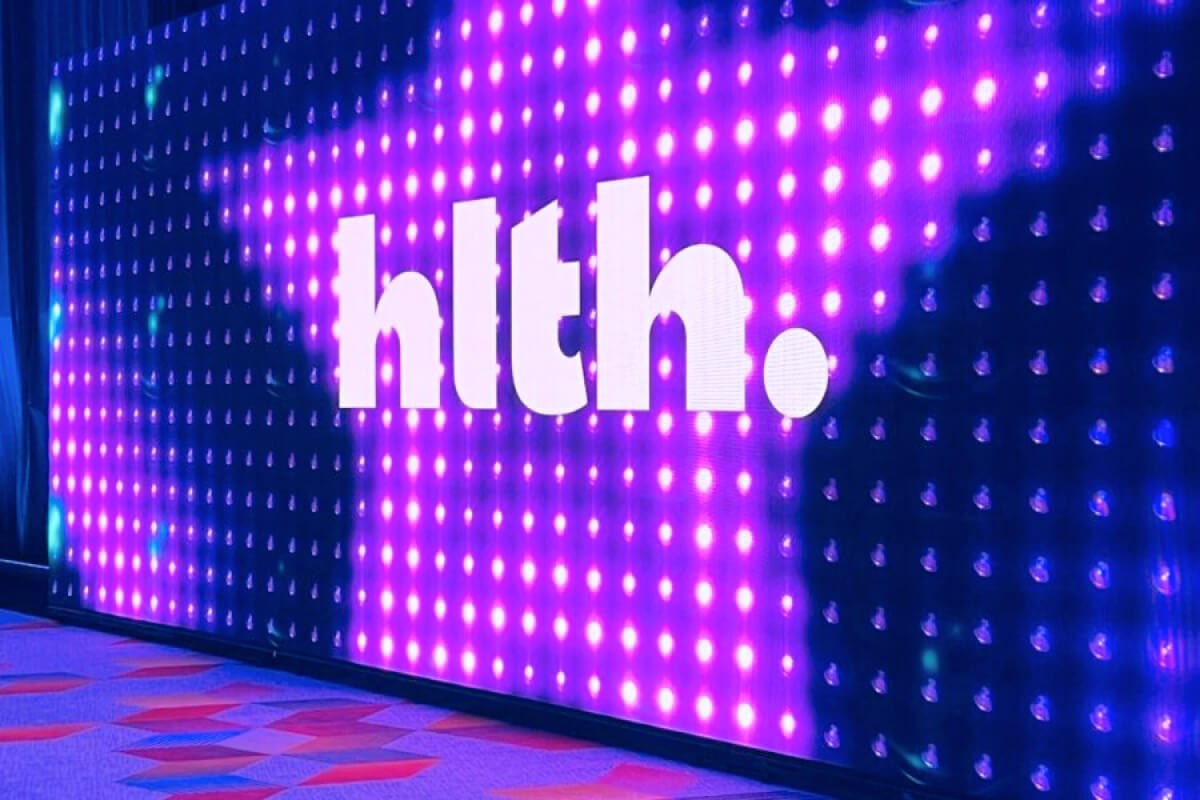Amy Oliver, Marketing Manager
What a whirlwind of a week! It was my first time to the HLTH conference, and it truly did not disappoint. As a marketer, I appreciate the attention to detail and the production that goes into a conference like this, and HLTH pulled out all the stops. The entryway with the massive video screens, maps all over the place, the bright uplighting, the stage decor and production, the food/drinks available on the show floor to save time… all of it created a fantastic experience to drive energy and optimism that other conferences could learn from.
Beyond the conference aesthetics, the session content and conversations were also top notch. A stat that blew me away right off the bat was the diversity of the presenters: 38% were people of color and 54% were women.
Also, the attention that HLTH and this community pays to health equity more than pleasantly surprised me. My favorite stage to check out presentations was definitely the Impact Stage, where topics ranged from removing barriers to equitable healthcare, to how to ensure access to healthcare in rural areas. And, Lessons from the Front Lines: LGBTQ+ Health Experiences was hands down my favorite session of the week. The experiences from the panelists were inspiring and I’d be lying if I said I didn’t tear up. A couple times.
54% of female presenters stuck with me all week, so I decided to get the perspective from a few of my female counterparts on their overall experience from the week. I didn’t ask a particular question of them, just to share their thoughts of the week. Here’s what my amazing female counterparts had to say:
 Cynthia Church, Chief Strategy Officer
Cynthia Church, Chief Strategy Officer
Healthcare is built firmly on people and relationships, and HLTH was like a big reunion. If the mark of a good event is the hug to handshake ratio, this one definitely saw more hugs.
It also felt like a much needed group hug, but with one notable absence – there were not a lot of providers. And they are the ones that need the hugs. Having said that – part of the wonderful part of our industry is that, although many providers weren’t there in person, their presence was felt as I heard many of us lamenting the reasons why they were staying back. Unlike other years where conference talk about “clinician burn-out” and “pajama time” were part of the agenda, this year the discussions had a lot more urgency and were taking place from the main stage to the social hours.
I probably spent more time on the show floor than in the sessions, and was encouraged by a bit of a new vendor mix — I saw more companies focused on efficiency, targeting workflow from the provider perspective.
I hope the positivity that we felt this week cascades into our hospitals, clinics, and other care environments where they know that we really do want to help them help everyone. Let’s be excited for those ideas to turn into actions, the words turn into plans, and we can use the energy to get some traction on truly adopting new solutions to make life easier for those who matter the most — the ones actually caring for our patients.
Paige Stocks, Director, Partnerships
Often the mark of a good conference for me is if I walk away with more questions than I came with. Engaging in conversations with people who are experts in their respective areas leads to finding new solutions to many of healthcare’s challenges and also leads to discovering new questions. So with that, I’d say this one was a success. A few other thoughts:
Wow, that was a big conference. A massive show floor and packed stages that hopefully prove, despite many external challenges, we collectively as innovators are continuing to pour energy into the vision that healthcare must adapt to better equip our providers and to improve the lives of patients.
I found the international startup community to be very present at HLTH — meeting a delegation from Australia and the blocks on the floor of companies from Israel and the UK. There is a lot to learn and share as we look at the differences in the relationship between payers and providers in these countries and inside the US.
Most of my time was spent in conversation with our partners and potential new partners and at the end of the day, regardless of new models and new opportunities we find, it will always be true that we must work together to deliver value to our provider customers.
Caitlin Goodrich, Account Director
The 2022 HLTH conference was a breath of fresh air. After nearly two years of pandemic focused discussions, panels, conferences, I was met with discussions from vendors and panelists with a new sense of purpose. I saw key focuses on Women’s Health, Preventative Health, and Mental Health as ways to create meaningful and intentional changes with communities and patient populations. Many panelists noted that women are key decision makers in the community and their family and especially where women lack the ability to make decisions about their own body, health systems need to find ways to help guide and support their patient populations — and digital solutions can play a role. This sentiment was shared by Joan Harvey, President, Care Solutions Evernorth.
The HLTH conference was attended by hundreds of vendors and a notable theme health systems tend to point out was availability of point solutions, but the lack of platform integrations. This was discussed in two different panels; Digital Therapeutics Playing the Long Game and The Benefits of Wellness with leaders at Employer and Health System organizations mentioning there is a mosaic of point solutions but there is also a need to reimagine ways so digital therapeutics isn’t a disjointed experience — bring the solution to the full spectrum of healthcare.
Holly Hahto, Account Director
What a great conference! The sessions were filled with industry leaders who shared their insights and knowledge on the current and future state of healthcare in the US. It comes as no surprise that, even with a focus on value-based care, further evolution is needed. Over 500 employers are looking at implementing some sort of healthcare plan for their employees in 2023 with a goal to improve quality and experience while reducing the overall cost of care.
As we shift to a more normalized, post-COVID environment, there’s still quite a focus on virtual care, specifically virtual primary care, and matching patients with disease management programs to bring the right technology to the right patient. There’s an increased awareness to “make it so simple for patients to connect to the health system.”


